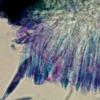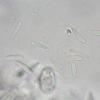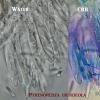
14-01-2026 10:02
Hulda Caroline HolteHello, These ascomycetes were growing on standing

13-01-2026 10:13
 Danny Newman
Danny Newman
Cordieritidaceae sp. on indet. wood w/ Hypoxylon s

13-01-2026 07:57
 Danny Newman
Danny Newman
cf. Bombardia on indet. decorticate woodAppalachia

14-01-2026 07:28
 Danny Newman
Danny Newman
Nemania sp. on indet. decorticate woodAppalachian

12-01-2026 22:02
Ethan CrensonHello all, I am hoping someone will have some ins

11-01-2026 20:35
Hello.A very tiny pyrenomycete sprouting sparsely

13-01-2026 18:55
Rees CronceStrossmayeria sp. on indet. decroticate hardwoodTh

13-01-2026 07:28
 Danny Newman
Danny Newman
Chlorociboria glauca on indet. decorticate logThe

13-01-2026 07:14
 Danny Newman
Danny Newman
Neodasyscypha cerina on indet decorticate logThe S

13-01-2026 09:10
 Danny Newman
Danny Newman
Dasyscyphella chrysotexta on indet. decorticate ha
Pyrenopeziza species
Nicolas VAN VOOREN,
01-07-2012 17:05
 I cannot determine this collection made on Rumex dead stems.
I cannot determine this collection made on Rumex dead stems.Apothecia subglobose then cupulate, Ø 0.2-1 mm, grey brown to greyish, outer surface with brown hairs, and margin with white hairs.
Outer excipulum composed of textura subglobulosa with brown cells, Ø 6-12 µm. Lateral hairs pale brown, septate, 55-120 x 4.7-5.5 µm, partially covered by an amorphous process. Marginal hairs hyaline, 3-4septate, 52-65 x 4-5 µm.
Spores subfusoid, 10-13 (14) x (2) 2.3-3 µm, eguttulate, in some cases slightly curved.
Asci 40-50 x 6-8 µm, without crozier, 8-spored, pars spor. 20-27 µm, with apical ring IKI+ (bb)
Paraphyses hyaline, with few small vacuoles.
The closest species seems to be Pyrenopeziza escharodes but it has smaller spores and asci with crozier. Any idea?
Hans-Otto Baral,
01-07-2012 17:18

Re : Pyrenopeziza species
Reminds me a bit of P. dilutella. But that has guttulate spores and croziers. Are you sure with the absence of croziers? This is quite ?a rare feature in Pyrenopeziza.
Zotto
Zotto
Andreas Gminder,
01-07-2012 17:22

Re : Pyrenopeziza species
Hello Nicolas,
I have found the same species some days ago, I think. But I have not noticed the absence of crosiers, I have to check that.
My collections was very abundant on dead stems of Rumex, associated with Pyrenopeziza escharodes. In fact they were growing side by side, but could be separated by the hairy margin of the first one, whereas P. escharodes had a nearly smooth margin. I show fotos when I have reduced them to a reasonable size.
The spore size of my collection was even bigger: (11)12-16 x 2,5-3 µm, oil absent. Marginal hairs hyalin, 30-60 µm long, up to 4-celled.
I took samples for DNA-extraction. Location was Obergurgl in Austria, in 1900 m NN.
best regards,
Andreas
I have found the same species some days ago, I think. But I have not noticed the absence of crosiers, I have to check that.
My collections was very abundant on dead stems of Rumex, associated with Pyrenopeziza escharodes. In fact they were growing side by side, but could be separated by the hairy margin of the first one, whereas P. escharodes had a nearly smooth margin. I show fotos when I have reduced them to a reasonable size.
The spore size of my collection was even bigger: (11)12-16 x 2,5-3 µm, oil absent. Marginal hairs hyalin, 30-60 µm long, up to 4-celled.
I took samples for DNA-extraction. Location was Obergurgl in Austria, in 1900 m NN.
best regards,
Andreas
Andreas Gminder,
01-07-2012 17:36
Nicolas VAN VOOREN,
01-07-2012 18:17

Re : Pyrenopeziza species
Thanks Andreas. I think also this is the same species.
My collection was made in Switzerland, near Fribourg (Moléson Mountain), with Michel Hairaud.
There were also other ascomata, more greyish, but they were parasited by Helicogonium trabinelloides.
About the croziers, if they are present, I couldn't distinct them.
My collection was made in Switzerland, near Fribourg (Moléson Mountain), with Michel Hairaud.
There were also other ascomata, more greyish, but they were parasited by Helicogonium trabinelloides.
About the croziers, if they are present, I couldn't distinct them.
Michel Hairaud,
01-07-2012 21:06

Re : Pyrenopeziza species
Bonsoir Nicolas, Zotto, Andreas et tous,
I did collect this species on dead black petioles of Rumex ( alpinus I suppose) and tried to study it with no name to put on it and I even got a doubt about the genera as the paraphyses appeared to be full after a while of Vbs staining in CRB (which is not a character, as far as I know, in Pyrenopeziza)
My main data are :
Ascus 52-63 (67) x 6-7, H+, iki intense blue
Spores 10,5-14 x 2-2,8 (3) , G =0, cylindro clavate
EE globulosa angularis 7-15 (25) , dark walls
ME globulosa with smaller cells 5-10 µm
Margin hairs up to 85 x 4-6µm and 5x septate, hyalin to dark , merging in ''locks''
Anchoring hyphae 1,5-2, dark braun
Here are a few pics macro and micro, I can send more if necessary
Amitiés
Michel
I did collect this species on dead black petioles of Rumex ( alpinus I suppose) and tried to study it with no name to put on it and I even got a doubt about the genera as the paraphyses appeared to be full after a while of Vbs staining in CRB (which is not a character, as far as I know, in Pyrenopeziza)
My main data are :
Ascus 52-63 (67) x 6-7, H+, iki intense blue
Spores 10,5-14 x 2-2,8 (3) , G =0, cylindro clavate
EE globulosa angularis 7-15 (25) , dark walls
ME globulosa with smaller cells 5-10 µm
Margin hairs up to 85 x 4-6µm and 5x septate, hyalin to dark , merging in ''locks''
Anchoring hyphae 1,5-2, dark braun
Here are a few pics macro and micro, I can send more if necessary
Amitiés
Michel
Hans-Otto Baral,
01-07-2012 21:29

Re : Pyrenopeziza species
Hi all
Clearly a Pyrenopeziza, Michel. F. ex. the ascus shape with a elongate-conical apex. Pyrenopeziza may have globose low-refractive VBs as far as I recall. The fourth pic is strange, however, but it is obviously an alteration induced by IKI, maybe distorted SCBs?
You don't have free spores? I see some small LBs near the poles. Any CRB-image?
Zotto
Clearly a Pyrenopeziza, Michel. F. ex. the ascus shape with a elongate-conical apex. Pyrenopeziza may have globose low-refractive VBs as far as I recall. The fourth pic is strange, however, but it is obviously an alteration induced by IKI, maybe distorted SCBs?
You don't have free spores? I see some small LBs near the poles. Any CRB-image?
Zotto
Andreas Gminder,
01-07-2012 21:38

Re : Pyrenopeziza species
Hello,
I have seen in a few spores one very small oil drop directly at the pole.
best regards,
Andreas
I have seen in a few spores one very small oil drop directly at the pole.
best regards,
Andreas
Michel Hairaud,
01-07-2012 21:48
Hans-Otto Baral,
01-07-2012 22:13

Re : Pyrenopeziza species
Fine! Yes, I think sich globose VBs are possible in Pyrenopeziza.
Zotto
Zotto
Raúl Tena Lahoz,
02-07-2012 11:23

Re : Pyrenopeziza species
Hi all!
I can´t say anything about the Rumex Pyrenopeziza but here I attach a photo of what I believe is Pyrenopeziza urticicola. In this one I saw mixed VBs and SCBs inside paraphyses. VBs were nearly non-refractive, while SCBs were more refractive. VBs stained in CRB whereas SCBs remained unstained.
Michel, did you notice SCBs in your paraphyses?
I wanted to ask:
Presence of SCB in paraphyses and hairs is a character of Pyrenopeziza? Is it a good character and can it be used to distinguish Pyrenopeziza from Mollisia?
Best regards,
Raúl
I can´t say anything about the Rumex Pyrenopeziza but here I attach a photo of what I believe is Pyrenopeziza urticicola. In this one I saw mixed VBs and SCBs inside paraphyses. VBs were nearly non-refractive, while SCBs were more refractive. VBs stained in CRB whereas SCBs remained unstained.
Michel, did you notice SCBs in your paraphyses?
I wanted to ask:
Presence of SCB in paraphyses and hairs is a character of Pyrenopeziza? Is it a good character and can it be used to distinguish Pyrenopeziza from Mollisia?
Best regards,
Raúl
Hans-Otto Baral,
02-07-2012 11:58

Re : Pyrenopeziza species
Oh yes, that's important: VBs can also be elongate in Pyrenopeziza. And yes, I never saw SCBs in Mollisia.
Hairs are not necessary in the genus, but frequent, sometimes very short.
Zotto
Hairs are not necessary in the genus, but frequent, sometimes very short.
Zotto
Andreas Gminder,
02-07-2012 12:02

Re : Pyrenopeziza species
Hello,
Vb can indeed be somewhat elongate in Pyrenopeziza, but they are never that continuous then in Mollisia. I think one can say that their length-width-ratio is never more then 2 or may be 3.
I have never observed Pyrenopezizas in cresyl blue, to be honest. I will do from now on.
best regards,
Andreas
Vb can indeed be somewhat elongate in Pyrenopeziza, but they are never that continuous then in Mollisia. I think one can say that their length-width-ratio is never more then 2 or may be 3.
I have never observed Pyrenopezizas in cresyl blue, to be honest. I will do from now on.
best regards,
Andreas
Raúl Tena Lahoz,
02-07-2012 12:21

Re : Pyrenopeziza species
Thanks Zotto!
Merci Andreas!
Raúl
Merci Andreas!
Raúl
Michel Hairaud,
02-07-2012 13:10

Re : Pyrenopeziza species
Bonjour cher Raul,
Thanks for your contribution, I did not notice SCBs in the paraphyses of this collection but I must confess I do not search for these bodies in Pyrenopeziza, which I will try to do from now on .
Amitiés (et bravo pour l'actualité sportive !)
Michel
Thanks for your contribution, I did not notice SCBs in the paraphyses of this collection but I must confess I do not search for these bodies in Pyrenopeziza, which I will try to do from now on .
Amitiés (et bravo pour l'actualité sportive !)
Michel
Raúl Tena Lahoz,
02-07-2012 13:51

Re : Pyrenopeziza species
Merci pour les donnés Michel!
Pour l'actualité sportive: c´est le tiki-taka ;-)))
Amitiés,
Raúl
Pour l'actualité sportive: c´est le tiki-taka ;-)))
Amitiés,
Raúl
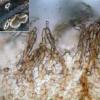
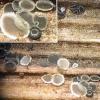
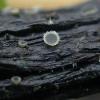

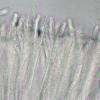
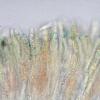

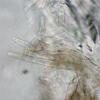
 paraphyses
paraphyses